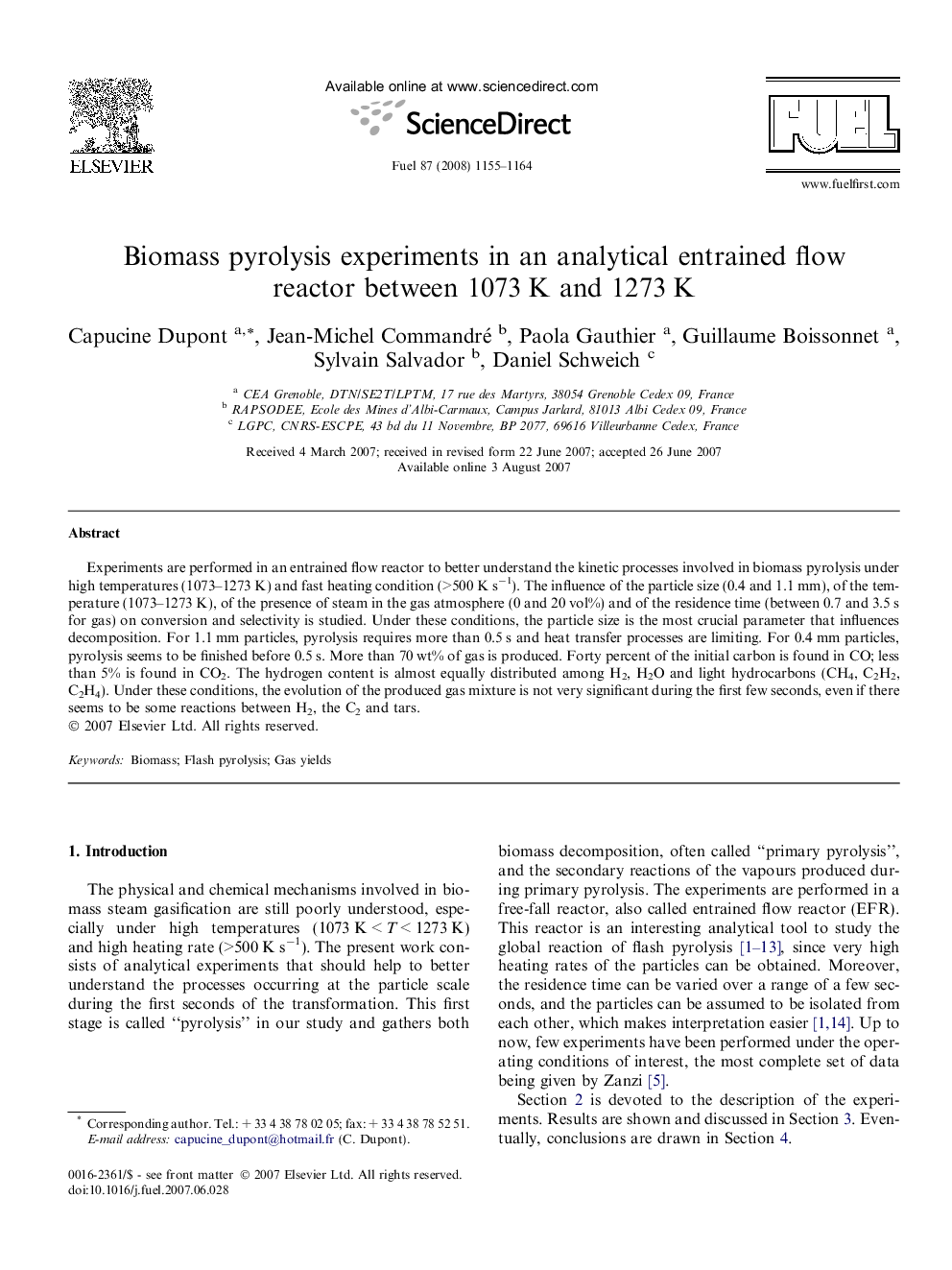| Article ID | Journal | Published Year | Pages | File Type |
|---|---|---|---|---|
| 208018 | Fuel | 2008 | 10 Pages |
Experiments are performed in an entrained flow reactor to better understand the kinetic processes involved in biomass pyrolysis under high temperatures (1073–1273 K) and fast heating condition (>500 K s−1). The influence of the particle size (0.4 and 1.1 mm), of the temperature (1073–1273 K), of the presence of steam in the gas atmosphere (0 and 20 vol%) and of the residence time (between 0.7 and 3.5 s for gas) on conversion and selectivity is studied. Under these conditions, the particle size is the most crucial parameter that influences decomposition. For 1.1 mm particles, pyrolysis requires more than 0.5 s and heat transfer processes are limiting. For 0.4 mm particles, pyrolysis seems to be finished before 0.5 s. More than 70 wt% of gas is produced. Forty percent of the initial carbon is found in CO; less than 5% is found in CO2. The hydrogen content is almost equally distributed among H2, H2O and light hydrocarbons (CH4, C2H2, C2H4). Under these conditions, the evolution of the produced gas mixture is not very significant during the first few seconds, even if there seems to be some reactions between H2, the C2 and tars.
